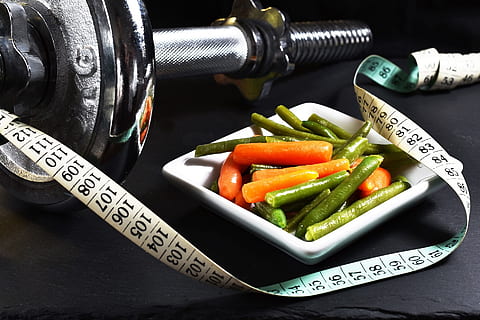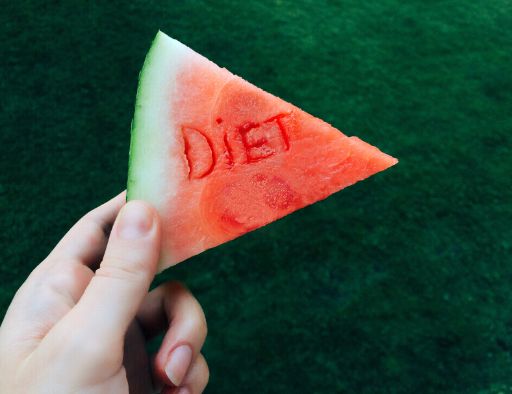Specialized diets are eating patterns that follow specific rules or principles, often for health, ethical, or environmental reasons. Some of the most popular specialized diets are keto, paleo, and vegan. These diets differ in their macronutrient ratios, food choices, and health benefits. In this article, we will compare and contrast these three diets and help you decide which one might be best for you.
This article will teach you abc diet.
Keto Diet

The keto diet is a popular eating plan that involves drastically reducing your intake of carbohydrates and replacing them with fats. This puts your body into a state of ketosis, where keto burn fat instead of glucose for energy. But what are the benefits and risks of this diet? Here is a brief overview of some of the pros and cons of the keto diet.
Benefits of the keto diet
- Weight loss: The keto diet may help you lose weight by suppressing your appetite and boosting your metabolism. Many studies have shown that people following a keto diet lose more weight than those following a low-fat diet.
- Acne: The keto diet may improve your skin health by lowering your blood sugar levels and reducing inflammation. Some studies have found that a keto diet can reduce acne symptoms in some people.
- Cancer: The keto diet may have some anti-cancer effects by causing more oxidative stress in cancer cells than in normal cells, making them more vulnerable to death. Some studies have suggested that a keto diet may be a safe and effective complementary treatment for some types of cancer, especially when combined with chemotherapy and radiation therapy.
- Heart health: The keto diet may improve your heart health by lowering your blood pressure, cholesterol, and triglycerides. Some studies have shown that a keto diet can reduce the risk of cardiovascular disease and stroke.
- Brain function: The keto diet may protect your brain from degeneration and improve your cognitive performance. Some studies have shown that a keto diet can enhance memory, attention, and mood in healthy adults and older adults with mild cognitive impairment . The keto diet may also help treat some neurological disorders, such as epilepsy, Alzheimer’s disease, and Parkinson’s disease .
- PCOS: The keto diet may improve the symptoms of polycystic ovary syndrome (PCOS), a hormonal disorder that affects women of reproductive age. Some studies have shown that a keto diet can lower insulin levels, restore ovulation, and reduce acne and hair growth in women with PCOS .
Risks of the keto diet
- Keto flu: The keto diet can cause some unpleasant side effects, especially in the beginning, as your body adapts to the new way of eating. These include headaches, fatigue, nausea, constipation, diarrhea, muscle cramps, and bad breath. These symptoms usually subside within a few weeks as you become more keto-adapted.
- Nutrient deficiencies: The keto diet can restrict your intake of many nutritious foods, such as fruits, grains, legumes, and some vegetables. This can lead to deficiencies in vitamins, minerals, antioxidants, and fiber. To prevent this, you may need to take supplements or eat fortified foods on a keto diet.
- Kidney stones: The keto diet can increase your risk of developing kidney stones, especially if you are prone to them or have a history of them. This is because the high intake of animal protein and low intake of fluids can increase the acidity of your urine and the excretion of calcium. To prevent this, you should drink plenty of water and limit your intake of salt and animal protein on a keto diet.
- Liver problems: The keto diet can put extra stress on your liver, as it has to process more fat and produce more ketones. This can lead to fatty liver disease or liver inflammation in some people. To prevent this, you should avoid alcohol and other toxins on a keto diet and consult your doctor if you have any liver issues.
- Mood changes: The keto diet can affect your mood and mental health in both positive and negative ways. Some people may experience improved mood and reduced anxiety on a keto diet, while others may experience irritability, depression, or mood swings. This may depend on your individual response to ketosis, as well as other factors such as stress, sleep quality, and social support .
- Long-term effects: The long-term effects of the keto diet are not well-studied or understood. Some experts believe that staying on a keto diet for too long may have negative consequences for your health, such as increased risk of chronic diseases, reduced bone density, and impaired growth in children. Therefore, it is advisable to follow a keto diet only under medical supervision and for a limited period of time .
Paleo diet

The paleo diet is an eating plan that is based on the foods that humans ate during the Paleolithic era, which lasted from about 2.5 million to 10,000 years ago. The idea behind the paleo diet is that our modern diets are not compatible with our genetic makeup, and that eating like our ancestors did can improve our health and prevent chronic diseases. But is the paleo diet really good for you? Here are some of the benefits and risks of following this ancient way of eating.
Benefits of the paleo diet
- The paleo diet emphasizes whole, unprocessed foods, such as fruits, vegetables, nuts, seeds, eggs, meat, and fish. These foods are rich in nutrients, antioxidants, fiber, and healthy fats that can support your immune system, digestion, skin, and brain health.
- The paleo diet can help you lose weight or maintain a healthy weight by reducing your calorie intake and increasing your metabolism. Many studies have shown that people who follow a paleo diet lose more weight and body fat than those who follow a standard diet.
- The paleo diet can lower your risk of developing type 2 diabetes and cardiovascular disease by improving your blood sugar control and lowering your blood pressure, cholesterol, and triglycerides. The paleo diet can also reduce inflammation and oxidative stress in your body, which are linked to many chronic diseases.
- The paleo diet can enhance your athletic performance and recovery by providing you with high-quality protein and healthy fats that can fuel your muscles and reduce muscle damage. The paleo diet can also improve your hydration and electrolyte balance by avoiding processed foods that contain added salt and sugar .
Risks of the paleo diet
- The paleo diet can be restrictive and difficult to follow for some people, especially if they have food allergies or intolerances, or if they are vegan or vegetarian. The paleo diet can also be expensive and time-consuming, as it requires buying organic or grass-fed products and preparing meals from scratch .
- The paleo diet can cause some side effects, especially in the beginning, as your body adapts to the change in diet. These include headaches, fatigue, nausea, constipation, diarrhea, bad breath, and cravings. These symptoms usually subside within a few weeks as you become more used to the paleo diet .
- The paleo diet can lead to some nutrient deficiencies, such as calcium, vitamin D, iodine, and B vitamins. These nutrients are important for bone health, thyroid function, and energy production. To prevent these deficiencies, you may need to take supplements or eat fortified foods on the paleo diet .
- The paleo diet can increase your risk of developing kidney stones or gout if you consume too much animal protein or purine-rich foods. These conditions are caused by the accumulation of uric acid crystals in your joints or kidneys. To prevent this, you should drink plenty of water and limit your intake of red meat and organ meats on the paleo diet .
Vegan diet

A vegan diet is a type of vegetarian diet that excludes all animal products, such as meat, eggs, dairy, honey, and gelatin. People may choose to follow a vegan diet for various reasons, such as ethical, environmental, or health concerns. But what are the benefits and risks of a vegan diet? Here is a brief summary of some of the pros and cons of this eating pattern.
Benefits of a vegan diet
- A vegan diet can provide many health benefits, such as weight loss, lower blood pressure, lower cholesterol, better blood sugar control, and lower risk of heart disease and some cancers. This is because a vegan diet is rich in fiber, antioxidants, phytochemicals, and healthy fats from plant sources.
- A vegan diet can also help protect the environment by reducing greenhouse gas emissions, water consumption, land use, and animal suffering caused by animal agriculture3. According to a 2018 study, if everyone in the world adopted a vegan diet, global food-related greenhouse gas emissions could be reduced by 70%, and deaths related to diet could be reduced by 19%.
- A vegan diet can also promote mindful eating, which is a practice of paying more attention to the food we eat and how it affects our body and mind. Mindful eating can help us enjoy our food more, eat less, and avoid emotional eating. A vegan diet may encourage mindful eating because it requires us to be more selective and conscious about our food choices.
Risks of a vegan diet
- A vegan diet can also pose some challenges and risks, such as nutrient deficiencies, social isolation, and unrealistic expectations. Some of the nutrients that may be lacking in a vegan diet are protein, calcium, iron, zinc, vitamin B12, vitamin D, and omega-3 fatty acids. These nutrients are essential for our health and well-being, and may require supplementation or careful planning to meet the recommended intakes.
- A vegan diet can also make it difficult to socialize with others who do not share the same dietary preferences. Some vegans may face criticism, ridicule, or rejection from their family, friends, or coworkers who do not understand or respect their choices. This can lead to feelings of loneliness, isolation, or alienation.
- A vegan diet can also create unrealistic expectations or beliefs about its effects on health or the environment. Some vegans may think that they are immune to diseases or that they are saving the world by avoiding animal products. However, this is not necessarily true. A vegan diet is not a magic bullet or a panacea for all problems. It is important to be realistic and balanced about the benefits and limitations of a vegan diet.
Other Diets
Vertical Diet

The Vertical Diet is a way of eating designed to help athletes who are engaged in high-intensity activities consume a large number of calories they need to gain weight, foods that increase size and strength and maximize workouts. It was created by Stan Efferding, a world-renowned bodybuilder, powerlifter, and nutrition coach.
The Vertical Diet is based on two main principles: micronutrient density and digestibility. Micronutrient density refers to the intake of vitamins, minerals, and antioxidants that are essential for optimal health and performance. Digestibility refers to the ease of absorption and utilization of nutrients by the body. The Vertical Diet aims to provide both by choosing foods that are low in FODMAPs, which are short-chain carbohydrates that can cause digestive issues in some people.
The Vertical Diet is structured like an upside-down T. The horizontal part of the T represents the foods that provide micronutrients, such as fruits, vegetables, dairy, and starches. The vertical part of the T represents the foods that provide macronutrients, such as protein, carbohydrates, and fats. The main sources of macronutrients in the Vertical Diet are red meat and white rice, which are considered to be easily digestible and nutrient-dense.
The amount of food consumed in the Vertical Diet varies depending on the individual’s goals, activity level, and body type. However, some general guidelines are to eat at least one gram of protein per pound of body weight, to drink at least half a gallon of water per day, to limit alcohol and caffeine intake, and to avoid processed foods, added sugars, salt, and saturated fats.
The Vertical Diet claims to have several benefits for athletes and non-athletes alike, such as:
- Improving digestion and gut health
- Enhancing energy levels and recovery
- Boosting metabolism and thyroid function
- Balancing hormones and reducing inflammation
- Increasing muscle mass and strength
- Supporting immune system and organ function
- Preventing or reversing nutrient deficiencies
However, the Vertical Diet also has some potential drawbacks, such as:
- Being too restrictive and monotonous
- Lacking variety and diversity of foods
- Being expensive and time-consuming
- Being high in cholesterol and sodium
- Being low in fiber and phytochemicals
- Being unsuitable for vegetarians or vegans
- Being unproven by scientific evidence
Therefore, if you are interested in trying the Vertical Diet, you should consult your doctor or a nutritionist first and weigh the pros and cons carefully. You should also make sure to follow the diet plan that suits your individual needs and preferences
Carnivore diet before and after

The carnivore diet meal plan is a very restrictive eating plan that consists of only animal products, such as meat, eggs, cheese, and butter. Some people claim that this diet can help them lose weight, improve their health, and increase their energy levels. However, there is not much scientific evidence to support these claims, and the carnivore diet may also have some serious drawbacks and risks.
Babe Ruth Diet

The Babe Ruth diet is a term used to describe the eating habits of the famous baseball player Babe Ruth, who was known for his enormous appetite and love of steak, hot dogs, pies, and beer. The Babe Ruth diet was very high in calories, fat, protein, and carbohydrates, and very low in vegetables, fruits, and fiber. It was not a healthy or balanced diet by today’s standards,He consumed foods that increase size, but it seemed to work for Babe Ruth during his peak years as a baseball star. However, it also caused him some health problems later in life, such as weight gain, indigestion, and liver disease.
Some of the features of the Babe Ruth diet are:
- He ate a huge breakfast every day, consisting of steak, eggs, potatoes, toast, and coffee.
- He ate dozens of hot dogs and bottles of soda before, during, and after games. He once ate 12 hot dogs and drank eight bottles of soda before a game and collapsed on the field.
- He ate two or three steaks at a time for dinner, along with fries, lettuce, and apple pies with ice cream. He also liked to eat raw hamburger meat with chili sauce.
- He drank a lot of alcohol, especially beer and whiskey. He once drank 71 bottles of beer in one night.
- He rarely ate any fruits or vegetables. He once said that he only ate lettuce when he had a sore throat.
The Babe Ruth diet is not recommended for anyone who wants to maintain a healthy weight and prevent chronic diseases. It is very high in saturated fat, cholesterol, sodium, sugar, and alcohol, and very low in vitamins, minerals, antioxidants, and fiber. It can increase the risk of obesity, diabetes, heart disease, stroke, kidney stones, gout, liver disease, and cancer. It can also cause digestive issues, mood swings, dehydration, and bad breath.
Pureed foods

Pureed food is a type of food that has a soft, pudding-like consistency. It does not require any chewing and is easier to swallow and digest than solid food. Pureed food is often recommended for people who have difficulty eating or swallowing solid foods due to various medical conditions or treatments. Some examples of pureed foods are mashed potatoes, applesauce, yogurt, soup, and baby food.
Pureed food can help prevent malnutrition, weight loss, choking, and other complications that may arise from eating solid foods. However, pureed food may also be less appealing, satisfying, or varied than solid food. Therefore, it is important to make pureed food as nutritious, tasty, and attractive as possible. Some ways to do this are to use fresh ingredients, add seasonings and sauces, mix different colors and flavors, and use molds or piping bags to create shapes.
The benefit of pureed foods in dietary is that they are easier to swallow and digest than solid foods. This can be helpful for people who have difficulty eating or swallowing solid foods due to various medical conditions or treatments. Some examples of these conditions are dysphagia, gastroparesis, oral or dental surgery, jaw injury, bariatric surgery, or head or neck radiation.
3 Day Juice Cleanse

A 3 day juice cleanse is a type of detox diet that involves drinking only vegetable and fruit juices for three days. Some people do this to lose weight, improve their health, or cleanse their bodies of toxins. However, there is not much scientific evidence to support the benefits or safety of juice cleanses.
According to some sources, a 3-day juice cleanse may have some positive effects, such as:
- Giving your digestive system a break
- Promoting water weight loss
- Resetting your body to promote healthy eating habits
- Detoxing and re-hydrating your body
- Increasing energy levels
- Regulating blood sugar
- Preventing heart disease
- Reducing chronic inflammation
However, a 3-day juice cleanse may also have some negative effects, such as:
- Causing nutrient deficiencies
- Lowering your metabolism
- Triggering hunger and cravings
- Increasing the risk of dehydration and electrolyte imbalance
- Weakening your immune system
- Affecting your mood and mental function
- Causing headaches, fatigue, dizziness, nausea, or constipation
Therefore, if you are considering doing a 3-day juice cleanse, you should consult your doctor first and weigh the pros and cons carefully. You should also make sure to prepare well for the cleanse by planning out your recipes, schedule, and shopping list in advance. You should also drink plenty of water and avoid strenuous exercise during the cleanse. After the cleanse, you should gradually reintroduce solid foods and maintain a balanced diet.
The Menopause Diet 5 Day Plan to Lose Weight

This is a diet plan that claims to help women who are going through menopause or perimenopause lose weight and improve their health. It is based on eating balanced meals that include lean proteins, whole grains, fruits, vegetables, and healthy fats. It also aims to provide essential nutrients and prevent or reduce menopause symptoms, such as hot flashes, mood swings, insomnia, and osteoporosis.
There are different versions of the menopause diet 5-day plan to lose weight. Some of them follow a low carb or keto approach, while others are more similar to a Mediterranean-style diet. However, they all share some common principles, such as:
- Eating smaller portions and avoiding overeating
- Drinking plenty of water and limiting alcohol and caffeine
- Choosing foods that are high in fiber, antioxidants, phytoestrogens, and omega-3 fatty acids
- Avoiding foods that are high in sugar, salt, saturated fat, and processed ingredients
- Exercising regularly and managing stress levels







